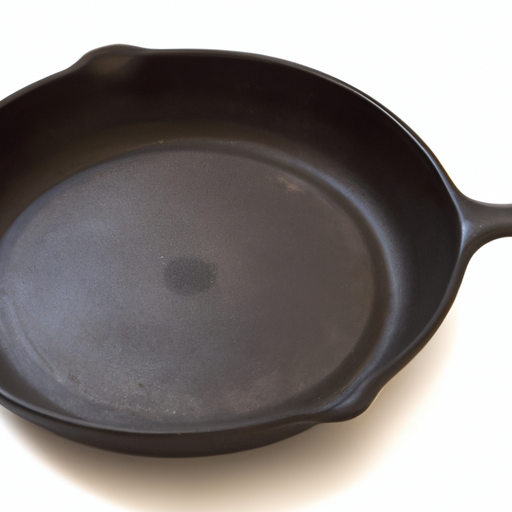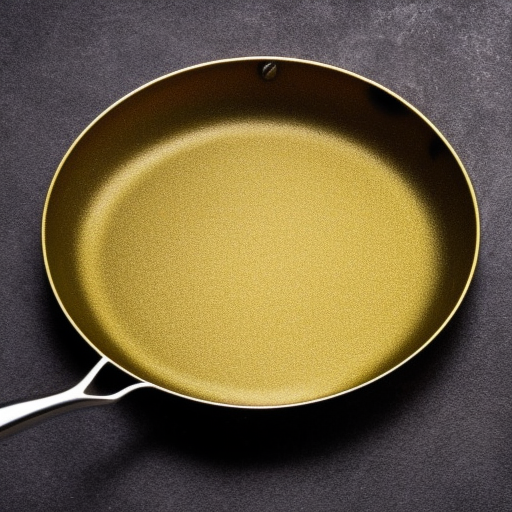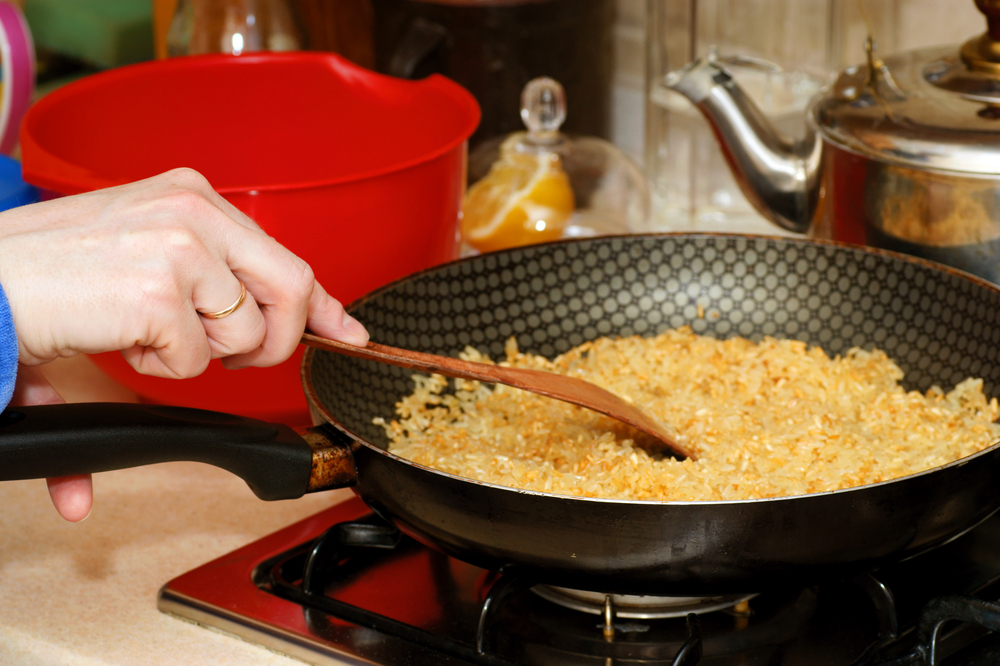Last Updated on February 6, 2023
Cooking can be a lot of fun, but it can also be quite confusing. Have you ever wondered what is the difference between a skillet and a frying pan? It’s an important distinction to make if you want to get the best results from your culinary endeavours. In this blog post, we’ll take an in-depth look at both skillets and frying pans, discussing their differences as well as how they compare with each other so that you can choose which one works best for your needs. So let’s dive into it!
Table of Contents:
- Skillet vs Frying Pan: What’s the Difference?
- The Skillet: A Versatile Kitchen Essential
- The Frying Pan: A Classic Cooking Tool
- Which One Should You Choose?
- FAQs in Relation to What is the Difference Between a Skillet and a Frying Pan
- Conclusion
Skillet vs Frying Pan: What’s the Difference?
Skillets and frying pans are two of the most essential tools in any kitchen. But what’s the difference between them?
When it comes to shape, skillets tend to be rounder with sloped sides while frying pans have straight sides that come up at a 90-degree angle from the base. This makes skillets better for sautéing vegetables or cooking omelettes as they allow food to slide around more easily, whereas frying pans are great for searing steaks or making pancakes because their flat surface allows you to spread out ingredients evenly.
In terms of size, skillets usually range from 8 inches (20 cm) all the way up to 16 inches (40 cm), while frying pans tend to stay within a smaller range of 10–12 inches (25–30 cm). The larger size of skillets also means they can hold more food than a standard-sized frying pan.
The materials used for each type of cookware also differ slightly; skillets are often made from cast iron or stainless steel, which is good for high-heat cooking and browning foods nicely. Frying pans on the other hand may be made from aluminium or nonstick surfaces such as Teflon® which make them ideal for low-heat tasks like scrambling eggs without sticking.
So when deciding between a skillet and a frying pan, consider what kind of dishes you plan on making and how much space is available in your kitchen cupboards. Skillets offer versatility but require more room while smaller-sized frypans can handle basic tasks quickly and easily, which is perfect if storage space is limited.
In conclusion, skillets and frying pans are both essential kitchen tools that can be used for a variety of cooking tasks. However, the differences between them should be taken into account when deciding which one to use for your next meal. Now let’s take a closer look at the skillet – an incredibly versatile kitchen tool.
The Skillet: A Versatile Kitchen Essential
The skillet is an essential kitchen tool that can be used for a variety of cooking tasks. It comes in various shapes and sizes, making it the perfect choice for everything from sautéing vegetables to frying eggs.

When it comes to shape, skillets are typically round or oval with sloped sides. The sloped sides make them ideal for flipping food over easily while also allowing excess fat and oil to drain away from the food as it cooks. Round skillets are great for shallow-frying foods like chicken cutlets or fish fillets, while oval skillets are better suited for larger items such as steaks or pork chops.
Skillet size is another important factor when choosing one for your kitchen needs. Smaller skillets (8 inches) are best suited for single servings such as omelettes and pancakes, while larger ones (12 inches) work well when cooking multiple portions at once like stir-fries or fajitas. If you’re looking to feed a large family or entertain guests, then consider investing in an extra-large skillet (14 inches).
Another benefit of using a skillet is its versatility; it can be used on any type of stovetop including gas, electric and induction ranges. They’re also oven safe up to 500°F so you can finish off dishes in the oven if needed – think baked macaroni and cheese. Additionally, most modern skillets come with nonstick surfaces which makes cleaning up much easier than traditional metal pans that require scrubbing after each use.
The skillet is a kitchen essential that can be used for a variety of cooking tasks. Its versatility makes it an indispensable tool for any home chef. Now, let’s explore the classic frying pan and its unique features.
The Frying Pan: A Classic Cooking Tool
The frying pan is a classic kitchen tool that has been used for centuries to cook delicious meals. It’s an essential part of any home chef’s arsenal, and its versatility makes it one of the most popular cooking tools around.

A frying pan typically has a flat bottom with sloped sides that allow food to be cooked evenly on all sides. The size and shape of the pan will vary depending on what you’re using it for; larger pans are great for sautéing vegetables or making omelettes, while smaller pans can be used to fry eggs or make pancakes. Frying pans come in various materials such as stainless steel, cast iron, aluminium, and non-stick surfaces like Teflon. Each material offers different benefits; stainless steel is durable and easy to clean but doesn’t conduct heat very well, while cast iron retains heat better than other materials but requires more maintenance due to its porous nature. Non-stick surfaces are ideal if you want your food not to stick when cooking delicate items like fish fillets or scrambled eggs.
The frying pan is a versatile, reliable and classic cooking tool that has been used for centuries. It is ideal for a variety of tasks in the kitchen, but it’s important to understand how it differs from other cookware such as skillets. Let’s explore this further by looking at which one you should choose.
Which One Should You Choose?
When it comes to kitchen cookware, there are two main contenders: the skillet and the frying pan. Both have their advantages and disadvantages, so how do you decide which one is right for you?
A skillet is a versatile tool that can be used for everything from searing steaks to baking cakes. It has a flat bottom with sloped sides that make it easy to move food around in the pan. The handle of a skillet is usually long enough to allow you to hold it with both hands while cooking. Skillets come in various sizes and materials such as cast iron, stainless steel or aluminium.
The frying pan also has a flat bottom but its sides are straight up instead of sloping down like those on a skillet. This makes it easier to flip foods like pancakes or omelettes without having them slide off the side of the pan. Frying pans come in many different sizes and materials including non-stick surfaces which make them ideal for delicate foods like fish fillets or eggs that would otherwise stick to regular pans when cooked at high temperatures.
So which one should you choose? If you’re looking for something versatile, then go with a skillet; they are great for anything from sautéing vegetables to baking desserts. However, if your focus is more on flipping delicate items, then opt for a frying pan; its straight sides will help keep your food where it needs to be during cooking.
FAQs in Relation to What is the Difference Between a Skillet and a Frying Pan
What’s the difference between a pan and a skillet?
A pan and a skillet are both types of cookware used for cooking on the stovetop. The main difference between them is in their shape and size. A pan typically has sloped sides, allowing food to slide out easily when it’s done cooking. A skillet usually has straight or slightly curved sides, which helps keep food inside while it cooks. Additionally, skillets tend to be larger than pans, making them better suited for frying large amounts of food at once.
What makes something a skillet?
A skillet is a type of cooking pan with low, sloping sides and a flat base. It is usually made from cast iron or stainless steel and has either a long handle or two short handles for easy manoeuvring. Skillets are ideal for frying, sautéing, searing, braising and deglazing foods. They can also be used to bake casseroles and other dishes in the oven. The sloped sides allow excess fat to drain away from food while it cooks, making them an excellent choice for healthy cooking.
Conclusion
So what is the difference between a skillet and a frying pan? in a nutshell, skillets are more versatile than frying pans, but both have their own unique uses. If you’re looking for an all-purpose kitchen tool that can handle anything from searing steaks to making omelettes, then a skillet might be your best bet. On the other hand, if you need something specifically designed for shallow-frying or sautéing vegetables, then a frying pan could be what you need. Ultimately it comes down to personal preference and how often you plan on using either of these cooking tools.
Paul is the type of person who never met a problem he couldn’t fix. He can always be found tinkering with something in his house, even if it isn’t broken! His tips and tricks are often shared on our site. He’s the one you call when something breaks because he has been known to improvise fixes for everything from leaky faucets to malfunctioning dryers.

